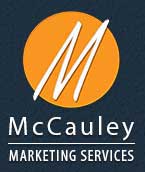How to Effectively Tell Stories in Marketing
Busy companies marketing new products, services, or ideas are often confronted with situations where the need to persuade management or potential clients to consider new approaches is vital to their success. Some ramble ad nauseam about why their social media proposal reigns supreme. And hey, maybe it does! However, there is a better way to coax listeners from uncertainty and boredom to confidence and piqued interest without the use of lengthy Power Points to explain a marketing strategy.
How? It’s as simple as telling a story.
We’ve all done it before. Whether it involved making up a tale to help your child fall asleep, charming a date with a charismatic anecdote about the first time you met, or scrambling to explain to your boss why you were late (Cut it short; you hit snooze too many times.), you have likely had to present someone with your storytelling skills.
While some are gifted at doing any of the above on the spot, there is a method for efficient storytelling you can apply to your business. According to Fast Company, people are too scared to use the authenticity of anecdotal evidence because it seems “too emotional,” so they stick to the seemingly professional hard facts and numbers. In actuality, emotions work better at reaching the core of the listener and sticking in the memory for far longer than a statistic. Another way to get ones attention without sacrificing numerical evidence is to mix emotion while still backing up your claim. This aids in not only setting the storyteller apart from the rest, but also providing optimal catering to the audience: a crucial component in person and online.
Here are three of the best tips from the article:
- When creating a storyboard, spark creativity and inspire yourself by listening to music or reading something that motivates you. Create a story arc that influences people to want to listen. Include the ups and downs and tension that your favorite novel would have.
- Complicating things to the point of confusion is never the answer when asking how to tell an amazing story. If you choose to convey your story using PowerPoint, keep text and complex graphics away. Recite and practice—essentials to great delivery—to the point where a single picture and few meaningful words suffice to deliver effectively.
- Storytelling gets easier once you see the results. When you begin to believe that right brain communication style better matches “real people” communication skills, you’ll be driven by the authenticity and subsequent persuasion of storytelling.
For more creative tips on making your marketing work for you in new ways, visit the McCauley Services website and connect with us on Facebook, Twitter, and Google+.
